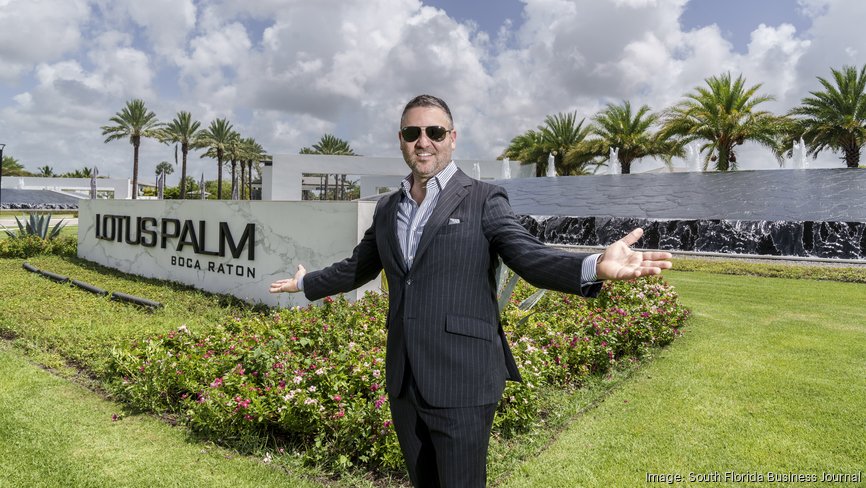Misha Ezratti’s vision for GL Homes reads like a modern blueprint for humane, resilient community-building—one that balances aesthetic ambition with practical stewardship. At a time when the housing sector is under pressure from affordability crises, changing demographics, and growing environmental awareness, Ezratti’s approach reframes homebuilding not simply as delivering units, but as designing long-term places where people thrive. This article examines the core elements of that vision: human-centered design, sustainability at scale, financial accessibility, community integration, and innovation in delivery—each a strand in a cohesive strategy that aims to redefine what a modern homebuilder can be.
Human-centered design: homes that respond to life
Central to Ezratti’s outlook is the belief that good homes respond to the rhythms of everyday life. Under this perspective, architecture becomes a service: layouts, materials, and neighborhood fabrics are chosen to support real human needs—flexible home offices, natural light for mental well-being, and adaptable spaces for multi-generational living. This human-centered stance emphasizes feedback loops with residents and stakeholders; learnings from completed projects inform future iterations so each development responds more closely to how residents actually live.
Table of Contents
ToggleEzratti’s vision also prioritizes quality over gimmickry. Rather than chasing the latest flashy amenity, GL Homes focuses on durable materials, light-efficient design, and thoughtful landscaping. The result is a built environment that feels intentional and enduring, minimizing future maintenance headaches and maximizing long-term resident satisfaction.
Sustainability as a business imperative
Sustainability in Ezratti’s model is not an optional add-on—it’s baked into the business case. Rather than compartmentalizing green features as extras, GL Homes integrates energy efficiency, water conservation, and low-impact materials into baseline product offerings. This reduces lifecycle costs for residents and strengthens the company’s long-term financial resilience by anticipating stricter regulatory environments and rising energy prices.
Beyond conservation, Ezratti envisions developments that actively enhance local ecosystems: native-plant landscaping to support pollinators, stormwater management that reduces run-off, and microclimate-sensitive urban design that mitigates heat islands. These measures are designed to be scalable and replicable, allowing sustainability to be economically feasible across diverse project types—from compact urban infill to larger suburban masterplans.
Affordability without compromise
A core tension for many builders is balancing affordability with design and sustainability. Ezratti’s approach rejects the false dichotomy that affordability must equal austerity. Instead, GL Homes pursues value engineering that preserves functional quality while removing waste—streamlined construction methods, standardized modules where appropriate, and smarter procurement strategies that reduce cost without sacrificing resident experience.
Ezratti also emphasizes mixed-tenure communities where market-rate homes support a portion of affordable units, creating socioeconomically diverse neighborhoods. Financing innovation—partnerships with mission-driven lenders, phased development approaches, and leveraging public incentives—figures prominently in the strategy to ensure projects remain financially viable while expanding access.
Community integration and place-making
Homes are only part of what makes a neighborhood livable. Ezratti champions a holistic perspective on place-making: connectivity to transit, walkable street networks, public realm investments, and local retail nodes that create daily convenience. In his view, successful communities are those that promote incidental social interaction—benches oriented toward plazas, pocket parks that invite spontaneous play, and community centers programmed with local services.
GL Homes’ developments under this vision aim to collaborate early with municipal planners and community groups, aligning projects with existing neighborhood fabric rather than imposing alien typologies. This collaborative stance reduces friction during approvals and produces developments that are better embedded into their context—physically, culturally, and economically.
Technology and construction innovation
Ezratti’s vision embraces construction technology as an enabler of quality and cost control. Modular components, advanced prefabrication, and digital workflows for design and project management allow GL Homes to compress timetables and reduce on-site waste. Importantly, technology is treated as a means to an end—not the end itself. Innovations are adopted when they demonstrably improve build quality, reduce risk, and can be scaled.
Data analytics and resident feedback tools also play a role after handover. Monitoring energy performance, tracking maintenance issues, and surveying resident satisfaction feed into continuous improvement cycles. This data-driven mentality positions GL Homes to refine product offerings rapidly and to highlight proven benefits to prospective buyers and policymakers.
Design for longevity and adaptability
The future is uncertain; households change, and neighborhoods evolve. Ezratti’s strategic design principle is adaptability—houses and apartments that can accommodate life changes without massive retrofit. This might mean structural provisions for easy conversion of rooms, flexible mechanical systems that can be upgraded incrementally, or ground-floor spaces designed for changing commercial uses.
Designing for longevity also carries environmental benefits: reducing demolition and the embodied carbon associated with rebuilding. By planning buildings and neighborhoods that can age gracefully, GL Homes under Ezratti reduces both financial and ecological costs over decades.
Talent, culture, and leadership
A company’s vision can only be implemented by people. Ezratti invests in cultivating internal culture—multidisciplinary teams where architects, engineers, landscape designers, and community liaisons work together from project inception. Cross-functional collaboration reduces siloed decision-making and accelerates problem-solving during complex developments.
Equally important is external partnership: local contractors, social-service organizations, and civic planners. Ezratti’s leadership favors long-term relationships over transactional deals. This orientation yields smoother project delivery and better long-term stewardship of properties once occupied.
Measuring impact and the ethics of growth
Ezratti’s vision insists on measurable outcomes. Success metrics extend beyond units delivered and revenue earned to include energy saved, resident satisfaction, local job creation, and the degree to which developments contribute to public life. Transparent reporting and third-party verification—whether through green building certifications or independent social-impact assessments—are part of the accountability framework.
This attention to metrics is tied to an ethical stance: growth must be responsible. Instead of pursuing market share at all costs, GL Homes under Ezratti opts for projects where the company can make a meaningful positive contribution, even if that means slower expansion in some markets. The philosophy reframes growth as a vehicle for shared value, not mere scale.
Looking ahead: resilience and legacy
If there’s a throughline in Misha Ezratti’s vision, it’s resilience—of people, communities, and the environment. Whether facing climate volatility, shifting housing needs, or economic cycles, the goal is to build places capable of weathering change. This long view shapes every decision from site selection to material choice to financing structure.
Ezratti’s legacy, if fully realized, would be a portfolio of neighborhoods recognized not only for their craftsmanship and efficiency but for their human dignity and social cohesion. In an era where the meaning of “home” is under intense re-evaluation, his vision positions GL Homes to be a builder of both houses and healthier, more equitable communities.
Conclusion
Misha Ezratti’s vision for GL Homes offers a pragmatic yet aspirational framework for contemporary development—human-centered, environmentally responsible, financially savvy, and socially conscious. It suggests that the future of homebuilding lies less in isolated feats of architecture and more in integrated, data-informed, and community-embedded practices that produce long-term value. For residents, policymakers, and industry peers, the promise is clear: a model of development that understands homes as the foundation for resilient, flourishing lives.



